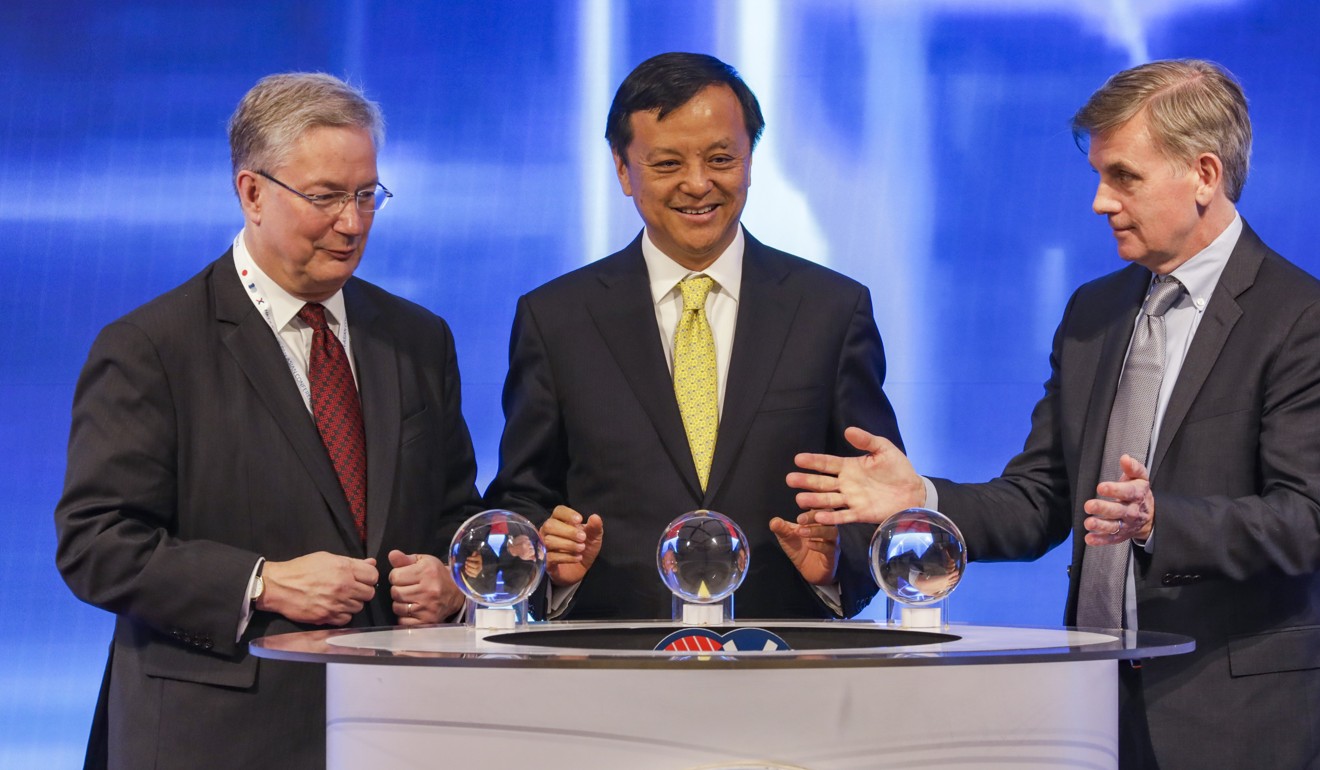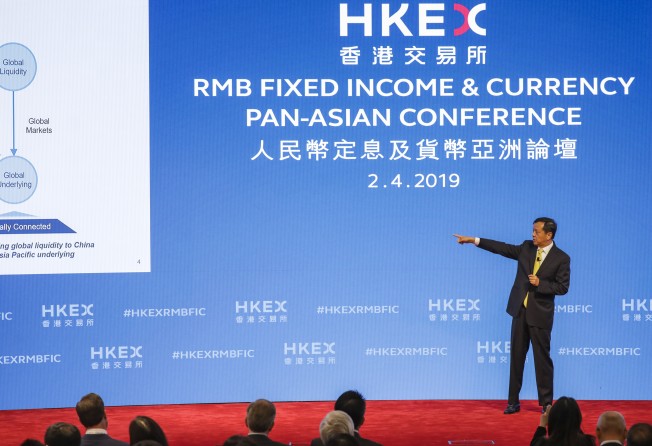
Inclusion of Chinese bonds in Bloomberg Barclays index to spur trading via HKEX connect scheme
- Turnover of yuan-denominated bonds traded through the HKEX’s connect scheme rose to 7.8 billion yuan on April 1 from an average of 6 billion yuan in the first quarter

Turnover in Chinese bonds traded through the Hong Kong Exchanges and Clearing’s bond connect scheme is set to rise further after yuan-denominated bonds were included in a widely tracked global bond index.
The inclusion of Chinese government bonds and bank securities in the Bloomberg Barclays Global Aggregate Bond Index was announced on February 1, but it came into effect on April 1.
On Monday, turnover of Chinese bonds traded through the bond connect scheme rose to 7.8 billion yuan (US$1.16 billion), up from the daily average of 6 billion yuan in the first quarter, and 5 billion yuan last year. The bond connect’s average daily turnover in February was 6.48 billion yuan, up about 8 per cent from 6.01 billion yuan in January.
“The inclusion of mainland bonds into the index is another important milestone as China continues its financial market liberalisation,” Charles Li Xiaojia, chief executive of the HKEX, told the RMB FIC Pan-Asian Conference in Hong Kong on Tuesday.
ANZ estimates potential foreign fund inflows of at least US$150 billion over the next 20 months from asset managers tracking the bond index.
In fact, after the inclusion was announced on February 1, the turnover through the bond connect has steadily improved as fund managers started to grow their position. The highest turnover of the bond connect was recorded at 12.5 billion yuan on February 14.
“[Despite] being the third largest in the world, China’s bond market is still largely unexplored by global investors,” Kevin Sheekey, chairman of external relations at Bloomberg, said at the conference.

He said that foreign investors own only 2.24 per cent of Chinese bonds, significantly lower than the 30 per cent of US bonds and around two-thirds of Australian bonds.
Sheekey said that he expects China this year will continue to deepen its market reforms and allow more foreign investors to access the mainland markets.
“Access to China’s bond market, once a barrier, is now well on the way to being addressed, including through CIBM (China Interbank Bond Market) directly and bond connect,” he said, adding that 120 funds from 18 companies are planning to trade through CIBM and bond connect via Bloomberg.
“With such access, China’s bond market is an opportunity investors can no longer ignore,” Sheekey said.
The HKEX bond connect scheme has 750 investors from 26 jurisdictions.
HKEX’s Li meanwhile said the bourse will also develop repo and swap products and expand clearing facilities for fixed income trading, settlement and collateral management, as part of the three-year plan announced in February.
“We want to achieve our goal of becoming a hub for fixed-income trading in the Asian time zone,” Li said.
The developments come after the HKEX on Monday reported its quietest first quarter in 10 years and lost its top global IPO ranking to Nasdaq.
Li said the IPO crown was last the last thing on his mind. “I’d rather make sure that our regulations are good so that we can ensure the quality of companies listing in Hong Kong.”